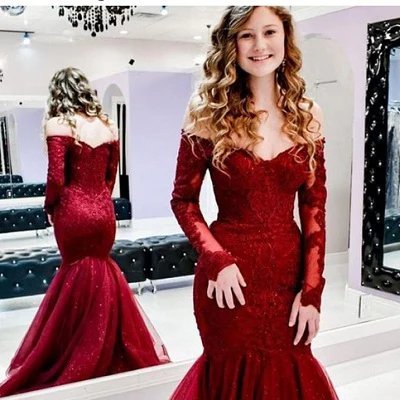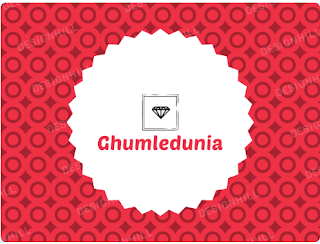Art directors typically lead teams of creative professionals in various industries. When applying for the role of an art director, it is crucial to showcase your skills, expertise, and specialization.
10 Generic Art Director Interview Questions
The hiring manager may ask some general art director interview questions toward the beginning of the interview to assess your profile and personality:
1. Tell me about your interests outside of work.
10 Interview Questions About Professional Experience
Here are some interview questions that hiring managers may ask art directors to assess their professional experience, background, and knowledge:
1. Describe the different projects and organizations you have worked at:
Throughout my career, I've had the opportunity to work on a diverse range of projects and collaborate with various organizations across different industries.
I've worked as an art director for [insert specific companies or agencies], where I've led creative teams in developing visual concepts and executing design solutions for clients ranging from small businesses to multinational corporations.
Additionally, I've freelanced on independent projects, allowing me to explore my creativity and work directly with clients to bring their visions to life.
Whether it's branding and identity design, advertising campaigns, digital media, or print collateral, I've gained valuable experience in translating ideas into compelling visual experiences that resonate with audiences and achieve desired outcomes.
2. Do you have any experience mentoring young artists?
Yes, I have experience mentoring young artists and designers. Throughout my career, I've had the privilege of working with interns, junior designers, and emerging talent, guiding them through projects, providing feedback and constructive criticism, and helping them develop their skills and grow as creative professionals.
I believe in the importance of nurturing the next generation of artists and designers and am passionate about sharing my knowledge and experience to help others succeed in the field.
3. Have you managed a team of freelance artists and creators?
Yes, I have managed teams of freelance artists and creators on various projects. As an art director, part of my role is to assemble and lead cross-functional teams of talented individuals to collaborate on projects with specific client needs and objectives.
This often involves working with freelance artists, designers, photographers, illustrators, and other creatives to bring a project to fruition.
I am experienced in coordinating workflows, managing schedules and budgets, and ensuring that all team members are aligned with the project vision and deliverables.
4. Which graphic design and editing software do you have the most experience with?
I have extensive experience with a variety of graphic design and editing software, including Adobe Creative Suite (Photoshop, Illustrator, InDesign), Sketch, and various 3D modeling and rendering programs.
These tools are essential for my work as an art director, as they allow me to conceptualize ideas, create visual assets, and bring designs to life across various mediums and platforms.
5. Explain a project that you are most proud of:
One project that I am particularly proud of is [insert project name]. It involved [insert specific details about the project scope, objectives, and challenges].
As the art director, I was responsible for leading the creative team in developing the visual concept and executing the design across multiple touchpoints, including [insert specific deliverables such as branding, digital media, print collateral, etc.].
Despite the complexity of the project, we were able to [insert specific achievements or outcomes, such as exceeding client expectations, winning awards, driving measurable results, etc.].
This project not only showcased my ability to innovate and problem-solve but also demonstrated the power of collaboration and teamwork in achieving successful outcomes.
6. How do you incorporate the latest art trends in your work?
I stay informed about the latest art trends and industry developments by regularly attending conferences, workshops, and exhibitions, as well as actively engaging with online communities and resources dedicated to art and design.
I believe that staying abreast of current trends is essential for remaining relevant and competitive in the field. When incorporating these trends into my work, I strive to do so in a thoughtful and strategic manner, considering how they align with the project objectives, target audience, and brand identity.
By combining contemporary aesthetics with timeless principles of design, I ensure that my work remains fresh and innovative while still resonating with audiences on a deeper level.
7. How do you shortlist artworks or designs for a particular project?
When shortlisting artworks or designs for a particular project, I consider a variety of factors, including the project brief, target audience, brand identity, and creative vision.
I begin by conducting research and gathering inspiration from a wide range of sources, including art, design, fashion, architecture, and pop culture.
I then carefully evaluate each potential concept or design based on its relevance, creativity, effectiveness, and alignment with the project objectives.
Additionally, I seek input and feedback from key stakeholders, ensuring that the final selection reflects a collective vision that resonates with the intended audience and achieves the desired outcomes.
8. Can you recall a situation where your art direction and guidance helped solve a crucial problem?
Yes, I recall a situation where my art direction and guidance helped solve a crucial problem for a client. The client was facing challenges with their brand identity, as it no longer resonated with their target audience and failed to differentiate them from competitors.
As the art director, I conducted a thorough brand audit and identified areas for improvement. I then worked closely with the creative team to develop a refreshed visual identity that better reflected the client's values, personality, and unique selling points.
By implementing cohesive branding across all touchpoints and channels, we were able to reposition the client as a market leader and drive increased brand awareness, engagement, and loyalty.
9. Which of your projects do you consider the least successful, and what would you have done differently to make it a bigger success?
While I approach every project with the same level of dedication and commitment, there are inevitably instances where certain projects may not have achieved the desired outcomes.
One project that comes to mind is [insert project name]. Despite our best efforts, we encountered challenges with [insert specific issues or obstacles, such as budget constraints, timeline pressures, miscommunication, etc.].
In hindsight, I would have [insert specific actions or strategies that could have been implemented differently, such as better project planning, clearer communication, more robust collaboration, etc.].
By learning from these experiences and applying lessons learned to future projects, I strive to continuously improve and deliver better results for clients and stakeholders.
10. How have you used technology in your work and campaigns?
Technology plays a crucial role in my work as an art director, enabling me to leverage cutting-edge tools and techniques to enhance creativity, efficiency, and effectiveness.
Whether it's utilising digital design software for concept development and prototyping, leveraging data analytics and user insights to inform design decisions, or incorporating emerging technologies such as augmented reality and virtual reality to create immersive brand experiences, I am always exploring new ways to push the boundaries of what's possible in visual communication.
Additionally, I am adept at utilising various digital platforms and channels to reach and engage target audiences, whether it's through social media, websites, mobile apps, or other digital touch-points.
By harnessing the power of technology, I strive to create innovative and impactful designs that resonate with audiences and drive meaningful results for clients and stakeholders.
10 Expert Interview Questions for Art Directors
As the interview progresses, the hiring manager may ask specific in-depth questions about the role. This can help them evaluate whether you are suitable to perform the expected duties and responsibilities.
Here are some in-depth questions that you can encounter when applying for the role of an art director:
1. Which is the most challenging project that you have done till now?
In my first week, I would focus on immersing myself in the company culture, getting to know my colleagues, and familiarizing myself with current projects, clients, and processes.
I would also take the time to meet with key stakeholders, including clients and team members, to gain insights into their expectations, goals, and challenges. Additionally, I would review past projects and performance metrics to identify areas for improvement and opportunities for innovation.
In my first month, I would begin to take a more active role in ongoing projects, collaborating with the team to contribute my expertise and insights. I would also start to develop relationships with clients, seeking feedback and exploring ways to add value and enhance their experience.
Additionally, I would work with leadership to identify strategic priorities and develop a roadmap for achieving our goals.
Overall, my focus would be on integrating seamlessly into the team, making meaningful contributions, and laying the groundwork for long-term success.
8. How would you manage delays and missed deadlines by artists?
10. How much experience do you have managing budgets and resources?
5 Art Director Interview Questions with Sample Answers
Here are some interview questions with sample answers that hiring managers can ask art directors:
1. Where do you find your creative inspiration?
This can be one of the first questions that a hiring manager may ask you, as it can help them assess your personality, style, and influence.
This question allows you to create a positive first impression and showcase your artistic style and inspiration. Make sure you elaborate on your answer to convey expertise in the subject.


.jpg)








0 Comments